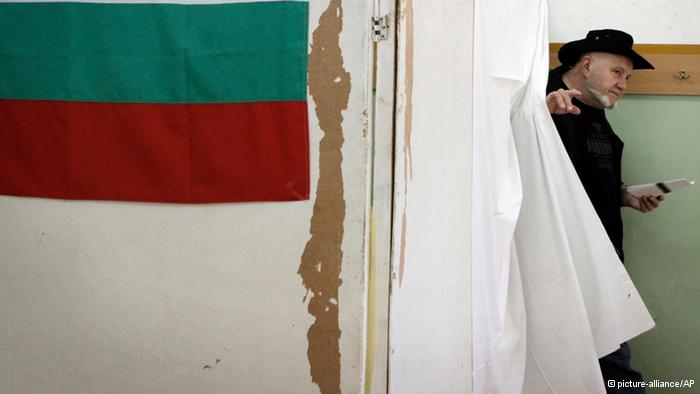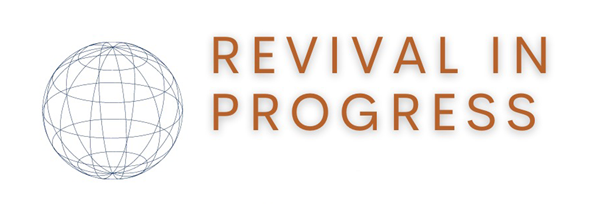Turnout in Bulgaria’s October Elections only 44%
Turnout in Bulgaria’s 29 October local elections was 44.94, in line with preliminary forecasts by sociologists. More than 2 713 000 voters went to the polls out of a total of just over 6 038 000 on the electoral rolls. This can be seen from the data published on the Central Election Commission website. In the previous local elections in 2019, the turnout in the first round was higher – 49.76%. Ballot voting will be held again on November 5, 2023. This is the 5th postpandemic elections in Bulgaria and 20th since 2005.
Government Elections in Bulgaria (2005-2022):
2005 Parliamentary Elections
2006 Presidential Elections
2007 Municipal Elections
2009 Parliamentary Elections
2009 European Parliament elections
2011 Presidential Elections
2011 Local Elections
2013 Early parliamentary elections
2014 Early Parliamentary Elections
2015 Municipal Elections
2016 Presidential election
2017 Parliamentary elections
2019 European Parliament election (23-26 May)
2019 Bulgarian local elections
2019 Municipal Elections
2021 April National Parliament election
2021 Second National Parliament election
2021 Third National Parliament and Presidential elections
2022 October elections for 48th National Assembly after the fall of a four-party coalition in June 2022.

PneumaReview.com: When, Why and How did we create it a decade ago
In the past 10 years since we released PneumaReview.com, we’ve received so many questions on how was it built and constructed to reach such a large audience with its intentionally broad spectrum of research in Pentecostal theology. While some of the technological expertise used is protected as know-how and intellectual property, most of the web architecture and social media strategies are based on free open source technology, which could and should be used by ministries and ministry websites who are dedicated to spreading the Gospel of Jesus Christ…
Introduction
I was first introduced to the Pneuma Review’s printed publication back in the seminary years. Yet not through the regular Pentecostal scholarly channels like a academia or SPS, but through the internet. Even then, the editors of this independent, but still scholarly publication, had a strong presence on the web. Sure, the Java technology used was a bit outdated, but still solid and getting the job done. By 2013, however, it was time for something new…
When
After following the printed issue of Pneuma Review for over a decade, around 2011-12 an obvious lagging was noticeable. It was a time when the volume of printed Pneuma Review has dwindled down and a clear alternative was in order within the time and space available. The only reasonable answer was in taking all past, current and future issues of Pneuma Review to the World Wide Web. It was in this time that our team decided to step in and help with the transition of the printed Pneuma Review to a custom designed internet community.
Why
Around 2013, the Pneuma Review has built up to a printed volume of some 1,600 scholarly articles and discussions plus numerous book reviews, announcements, and other valuable content. Obviously, an enormous task to envision, design, convert and present to the internet community. But it was well worth it.
The very idea of doing grass roots Pentecostal theology outside of a university or seminary context and yet on an academia level, was broadening not only the theological horizon of our movement, but the practical vanguard of Pentecostal academia.
How
First of course was the domain name. It was a miracle of its own, that after all these years on the internet, someone had not snatched the PneumaReview.com domain name before we were ready to make the transition to the internet. So our team’s first and foremost advice was, of course: Get the domain today!
But the domain was only the first of many challenges to resolve in the next few months of development. The difficulties with the digitalization of the printed publication had to first deal with the large overall audience reach and the database of both subscribers and articles. The high volume of daily visits was multiplied by the larger size of the articles. While a typical internet publication will have a 500-700 word limit, the Pneuma Review was presenting research topics of 12-15 at times even 20-25 single spaced typed pages. Just for example, Craig S. Keener’s review of John MacArthur’s Strange Fire was close to 20 pages. Combined with the growing number of articles read daily, social media involvement with ongoing discussions and its very specific audience, this was enough to scare away most web developers in the profession.
So how did we do it? Why the know-how in the technology used should not be disclosed as public domain, several strategic points in the building of the actual web property, web presence and web strategy may be of some help to readers who are working on a Pentecostal web project of their own:
- As a main priority, the search engine optimized web platform was designed to publish all past and future issues of the Pneuma Review in an compatible digital format
- A user friendly magazine-like design provided the options to publish individual articles and/or embed complete issues of the magazine in a PDF format
- Database pagination for larger volume of simultaneous users and database storage was implemented to server the enormous content volume (some 200Mb of database just for the starting archive of articles)
- SEO compatible web SCHEMA architecture was specifically designed with reader’s search engine experience in mind. The difficulty here was not providing volume to the search engines, which the article archive had in abundance, but sorting and selecting from thousand of search key words and phrases in order to attract the specificity of the audience
- An advanced administrative panel aided the day-to-day backend operation of the web platform
- Media embed (audio, video and live stream) was enabled as automated post attachments carried on both the website and social media
- Finally, to increase user involvement, the social network module included auto publication, audience engagement, feedback and discussions which were seamlessly integrated between many social properties while being stored serverside for the use of the platform
Just as a side note, the architecture design of Pneuma Review to this day remains one of the very few Christian web entities out there that were specifically designed to invoke reader participation. And to my knowledge, it remains one of the largest (with well over 2,000 scholarly publications) and absolutely free to use resource of Pentecostal academia on the internet.
The road ahead…
As technology constantly progresses, there’s always so much to improve. From a purely technological standpoint, however, there are several immediately necessary measures, which Pneuma Review is due. The free registration via social login and auto translation of the article database were both envisioned in the platform from its genesis. Their immediate implementation will open this invaluable web resource to the global community of Pentecostal scholars worldwide. With this move, the SEO optimization not only of generated content, but also social media archives (by rule disregarded by most search engines as per their privacy regulations) will open a massive amount of organic back linking, which will reaffirm the importance of the website as a global community building tool.
Furthermore, the current web platform offers several valuable opportunities for marketing the product, which began as a printed publication. The way it was designed and structured, the whole database is completely printable both as a periodical and volume/series format. Using this current technology makes printing once again an inexpensive and invaluable option, as potential revenue is not only sufficient to cover the cost of printing, but also to invest in further development of the web platform itself.
Finally, the building of a Pentecostal community on the internet with the resources of higher academia is perhaps the single and most important attempt to merge Pentecostal theology and praxis within the last couple of decades. Thus, recovering not only the grass roots of Pentecostal scholarship, but remerging the purity of doctrine with the ministry of the church.
Yes, in few short years social media has provoked an unprecedented response from the Pentecostal community. But social media is not here to stay. As it changes and progresses, it will soon be obsolete as everything else in technology. For this reason, the present opportunity to engage the global Pentecostal community with theology proper via social media must not be taken lightly. And why not even a move from “dead old white guys” theology and organization to understanding God through color, ethnos and gender that truly represents the internationalization of Pentecostal faith and praxis and involves ethnicity, adversity and vanguard of the global Pentecostal academia today?
Dr. Dony K. Donev holds a doctoral degree from the Pentecostal Theological Seminary. His dissertation work explored Bulgarian Churches in North America through a paradigm of ministry which studies and people groups with post-Communist origins within the global Pentecostal movement. Currently, as a post-graduate fellow, Dr. Donev is exploring the roots of Protestantism in Eastern Europe. He is available for consultations on building Christian communities online for the advancement of faith research and spiritual understanding.
SIGNS of the LAST DAYS: GOG and MAGOG

Polk Revival Going on for a Month

Initially 7, now 8 churches and multiple ministries across Polk County, TN have set to seek after the will of God for revival in their area after the pandemic. The revival has gone on now over a month each week changing to another of the original seven church locations. Over a thousand have attended in total during September alone with multiple saved, recommitted and called to the ministry in the past month. Though Fridays were set as days for prayer and reflection, on several occasions services continued well through the weekend into the next church.
Churches from the greater Conasauga, Reliance, Ocoee, Old Fort, Benton, and Delano communities along with the two oldest Polk County congregations at Cookson Creek and Friendship Baptist, are joining piece by piece the original vision God has given to many ministers for this area of East Tennessee. While a few have seen it as continuation of the Lee University student revival, most have found it as restoring the original Appalachian/Cherokee holiness outpouring, which took place among L&N Depot and Hiwassee River Rail Loop workers in the old Methodist church across from Etowah‘s chamber of commerce. As Polk Revival continues strong, the participants are requesting prayer from all who love the Lord and have awaited His renewal of the land and His people. https://polkrevival.com/
SIGNS of the LAST DAYS: Middle East Tension

SIGNS of the LAST DAYS: Israel Restored

Revival in Progress
When we wrote back in March and again last month, we could hardly imagine what God had in store for our area. After three full weeks of revival with the Ballplay (9/17-22), Friendship (9/25-30) and Conasauga (10/2-5) churches, three more revivals are on our schedule this month. Swept by the wave of the Spirit, several independent churches have joined in with parallel meetings, thus multiplying the expected attendance exponentially. Impressed to extend the revival through November, our next 20+ consecutive meetings will be in revival tents by the highway. Meanwhile all across the country of Bulgaria:
- Pandemic has grown to the level of “mandatory” mask mandate across the country
- Importing Ukrainian “war grain” sparked multiple anti-government protests in Bulgaria
- As a result, the 5th government elections in Bulgaria since the pandemic will be in October
- A new NATO base (est. $55 mil.) will be built within the next few months next to my hometown of Yambol, which is bringing new attention to our Chaplaincy program there.
We appreciate your prayers and support at all times. We remain grateful for your commitment and partnership with our work for the Kingdom here in the States, Europe and beyond.









